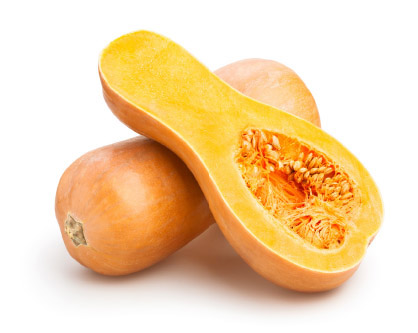It’s a Fruit, it’s a Gourd, it’s Butternut Squash!
When thinking of tasty healthy foods to enjoy during the cooler months, butternut squash should be at the top of the list.
This tasty fruit is versatile from vegetarian dishes to decorations. The name “squash” comes from the Narragansett Indian word askutasquash, which means to be eaten raw or uncooked. Due to their hard shells these hearty fruits, also known as gourds, were often used as containers or utensils by hollowing out the flesh, then drying the skin. Today, gourds are sometimes used as ornaments or festive decorations to add a little extra to the holiday table.
Butternut squash is packed full of magnesium, fiber and iron, while bursting with vitamin A and beta-carotene. When selecting a butternut squash it should be heavy for its size as well as have the stem attached which helps retain moisture. The skin should be firm, free of bruises and matte (not shiny); an indication that the squash was fully ripe when picked from the vine. The best place to store this robust fruit is in a cool, dry, dark place, avoiding the refrigerator. The more vibrant the squash’s flesh color, the sweeter it will be. If the squash is not as sweet as one would like, just add a touch of sugar, agave nectar or honey to brighten up the flavor.
Even though there are many different types of squash, butternut is becoming more and more popular due to its smooth texture, appealing color and subtle sweetness. This fruit can be prepared using many different methods including baking, boiling, roasting, sautéing and/or steaming. This edible gourd makes a great foundation for meals and side dishes, from roasting in the oven then blending into a heartwarming soup or chopped and tossed with other vegetables for a delectable accompaniment. Any way butternut squash is prepared, it will certainly please a crowd. So tonight, go for the gourd.








